Most people don’t know how long you can store these everyday foods
Have your fill without getting ill

Hammad Stock Images/Shutterstock
Knowing how long you can safely keep food and drink for can prevent both food waste and illness. Food naturally goes off more quickly when it’s not stored correctly, but when it is, it could actually last longer than you think. From fresh eggs to creamy yogurts, here we reveal the real shelf life of your favourite foods and provide tips on how to store them safely.
Read on to discover how long you can really keep everyday food essentials for.
Use by and best before dates: what do they mean?
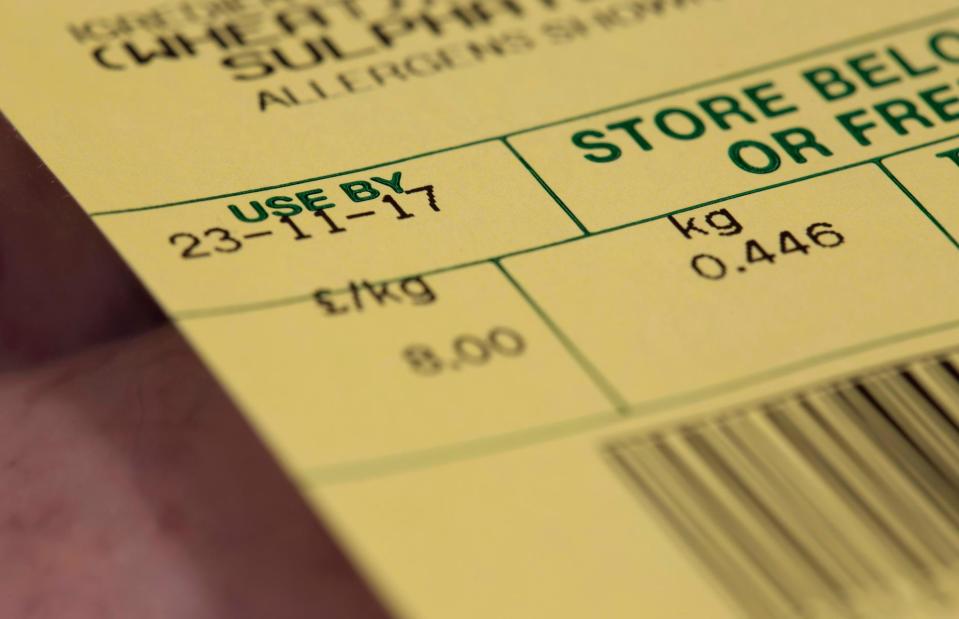
rigsby/Shutterstock
Browse any supermarket around the world and you'll notice virtually all food items display a use by or best before date on their packaging – but this can mean different things depending on the country. For example, in Europe, Australia and the UK, use by dates signify the final date the food should be consumed, as the product may not be safe to eat after this. Products boasting best before dates, however, reference the food quality, meaning foods consumed after this date may not be the best quality, but shouldn't make you ill.
Use by and best before dates: what do they mean?
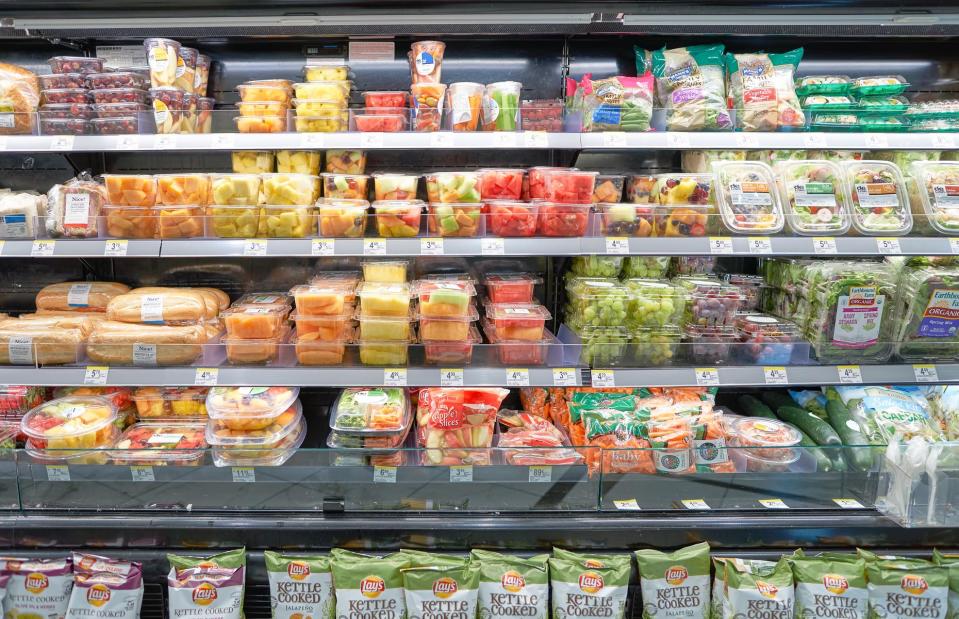
Sorbis/Shutterstock
In the US, it's a bit different – foods don't have expiry dates. Instead, the use by date indicates the last date the product is at its peak quality -this is not a safety date (with the exception of infant formula). Best by or before dates indicate when a product will be of the best quality and flavour. In Canada, however, foods with a shelf life of less than 90 days must legally be labelled with a best before date, though many products with a longer life also use this labelling. Expiration dates are meanwhile used on certain foods with strict compositional and nutritional specifications, including infant formula.
Fridge and freezer know-how
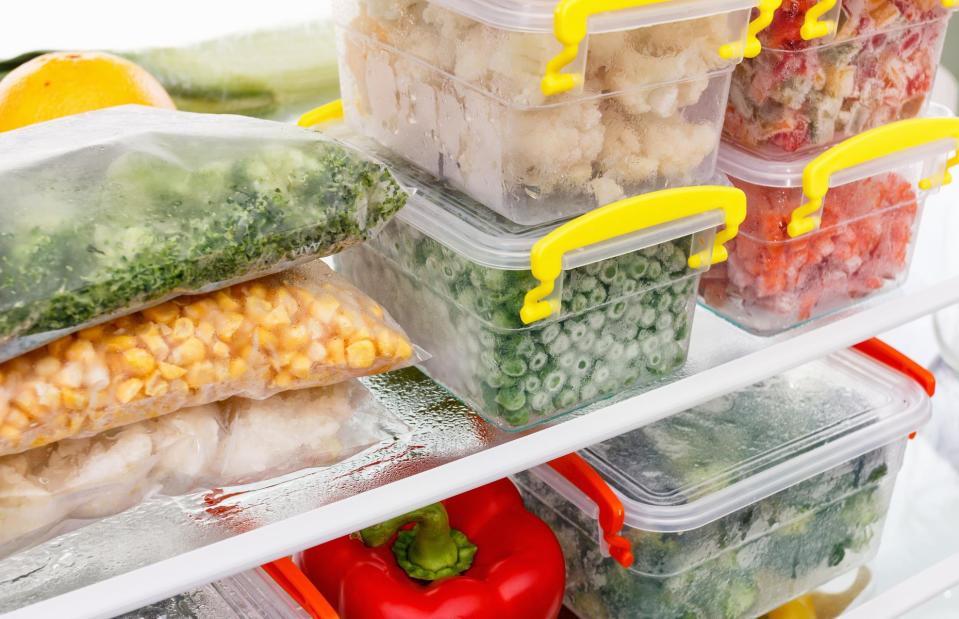
BravissimoS/Shutterstock
To ensure food stays fresh, flavourful and safe, it's recommended to keep your fridge at a temperature less than 5°C (40°F), ideally between 0-2°C (32-36°F). If your home fridge doesn't have a built-in temperature gauge, it's a good idea to keep a thermometer in there, checking regularly that it's at the right temperature. Your freezer temperature should be at -18°C (0°F). Freezing food down to this temperature completely stops bacteria from being able to grow.
How long can canned food be kept for?
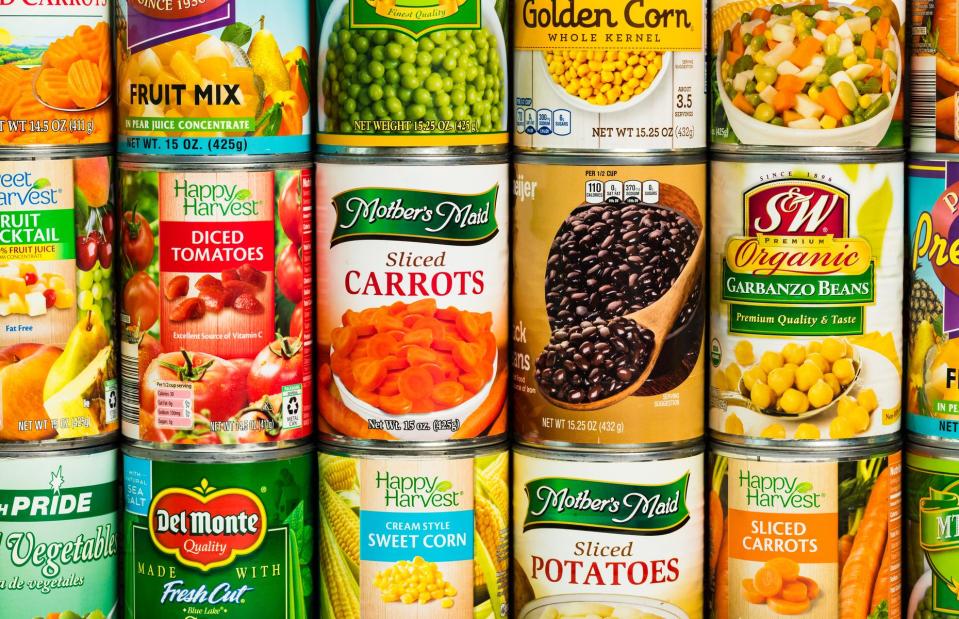
alisafarov/Shutterstock
In one famous study from 1974, scientists analysed 40-year-old cans of corn and found that the 'old' corn looked and smelled perfectly fresh. You’d be ill-advised to risk eating food this ancient, though, – a rule of thumb is not to stretch beyond 18 months for high-acid canned goods like tomatoes and grapefruit, or up to five years for low-acid canned goods (think vegetables, meat and fish). Never eat food from a can that’s bulging, badly dented or leaky.
Baby food and formula
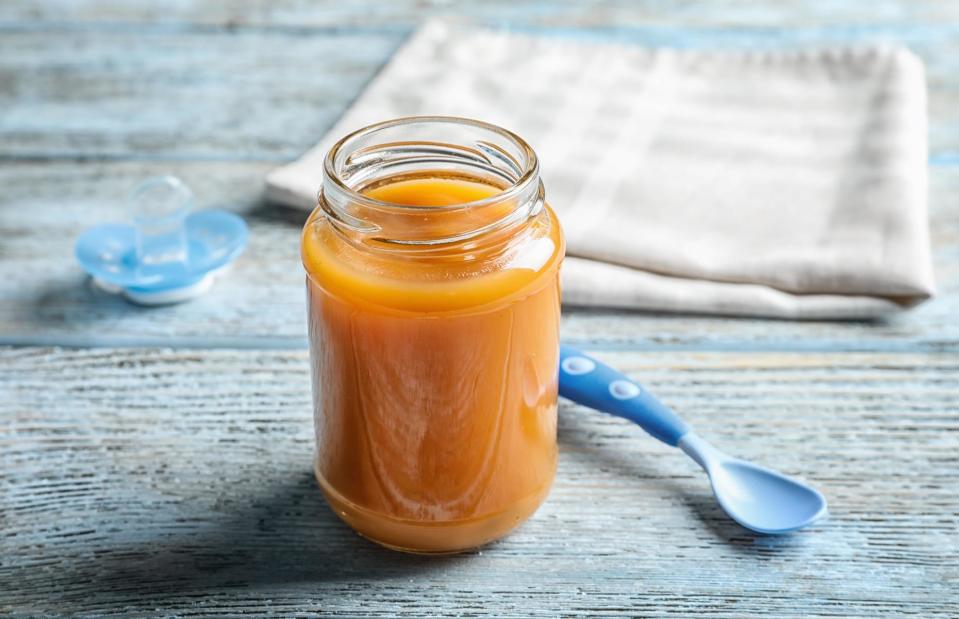
Africa Studio/Shutterstock
Babies have less developed immune systems and it's important not to take any unnecessary food safety risks. Opened jars or pouches containing fish, meat or eggs should be kept in the fridge and used within 24 hours. Homemade purées and jars of fruit or veg-based food will last for up to two days if chilled. Follow use by dates for powdered formulas; if the formula has been made up into a liquid, keep it in the fridge and use within 24 hours.
Bacon

New Africa/Shutterstock
Whether you like yours extra crispy and sandwiched between slices of bread or added to a burger, bacon is a fridge staple for many. Packets tend to have a visible use by or best before date but can typically last in the fridge for up to a week. If you know you won’t finish a whole pack of bacon in one go, pop it in the freezer for up to a month.
Butter

margouillat photo/Shutterstock
While you'll usually find this baking essential in the supermarket chiller section, you might be surprised to learn that it's completely fine to keep butter in the freezer for up to nine months. If you use it regularly, though, stashing it in the fridge (where it'll last for around one to two months) may be more convenient. Thankfully it's easy to determine if butter has gone off – just do a quick smell and taste test before use.
Cakes and cupcakes

AS Foodstudio/Shutterstock
Ordered too many cupcakes for your birthday? Handily these sweet treats will stay fresh for three to seven days, if kept in a sealed, airtight container, away from direct sunlight. While cake tastes better when left out of the fridge (the cool air can dry it out), refrigeration will extend its life marginally, with the product staying fresh for around10 days. Alternatively, you can freeze cakes and cupcakes for up to six months. However, if they contain fresh fruit or cream, keep in the fridge and eat within 24 hours.
Cereal

Shyripa Alexandr/Shutterstock
How many half empty cereal packets have you got lingering in your kitchen cupboards? Cereals usually come labelled with a generous best before or best by date and even beyond this date will be safe to consume (albeit potentially a little stale!). To ensure your cereal stays fresher for longer, keep a clip on the packaging to stop any moisture getting in and store in a cool, dry place.
Chocolate

Igor Normann/Shutterstock
Chocolate doesn't go off in a harmful way unless it contains a fresh cream filling. Keep in a cool, dark place – temperature fluctuations or high humidity can cause it to bloom and become grainy. Milk and white chocolate bars last for up to a year if kept unopened in the store cupboard (six months if opened), while dark chocolate can be consumed up to a year after opening. Refrigeration extends this shelf life, but always store in a sealed container so the chocolate doesn't become tainted by strong smells in the fridge.
Cooked chicken
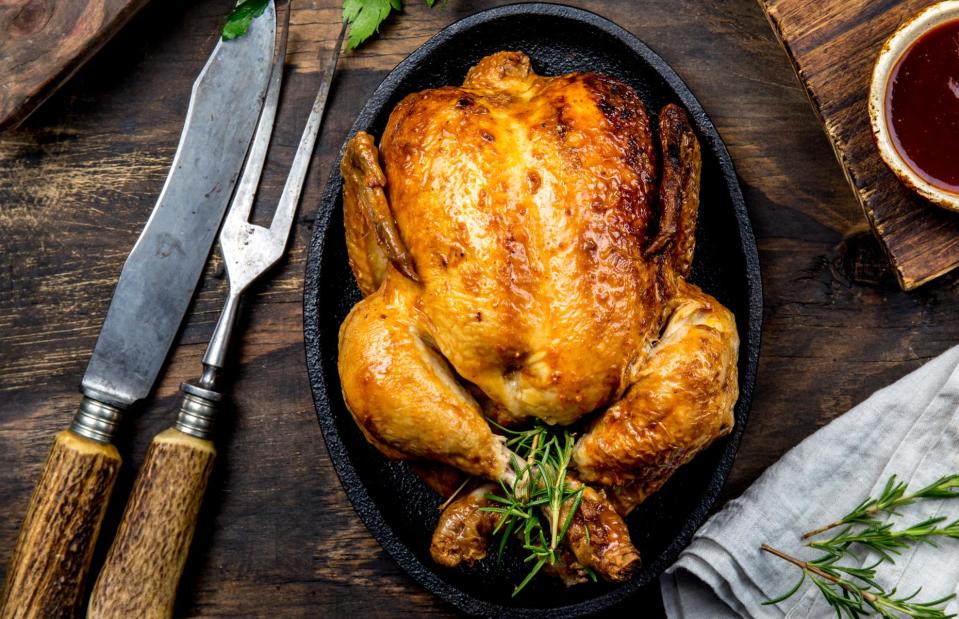
Larisa Blinova/Shutterstock
Providing it was chilled and covered within a couple of hours of cooking, the US Department of Agriculture (USDA) recommends consuming cooked chicken within three or four days. If it smells funny or looks unusual, it's worth avoiding altogether, though. Alternatively, you can freeze chicken the day it’s cooked and keep it in the freezer for up to four months.
Dried fruit
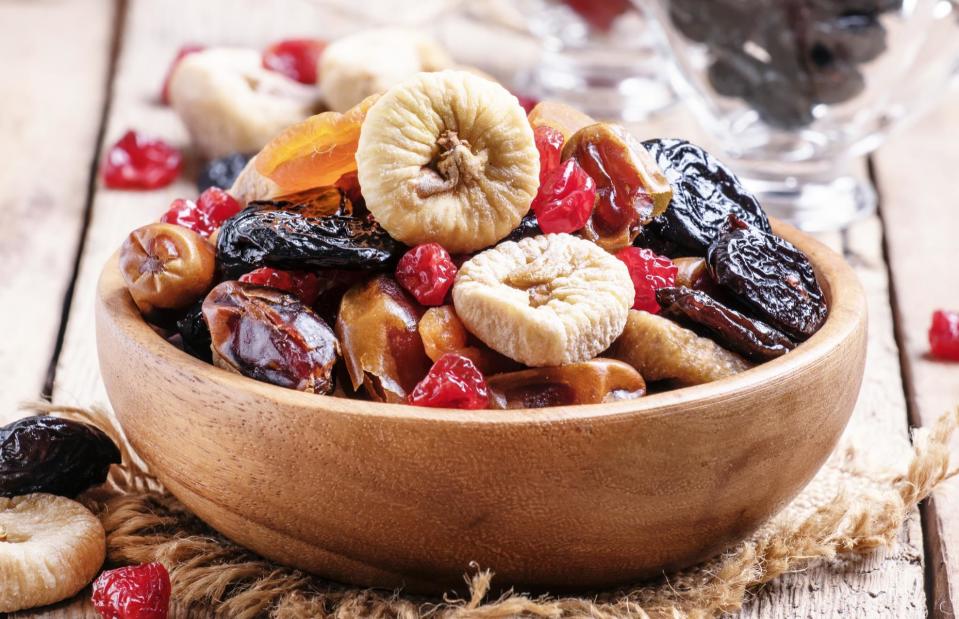
5PH/Shutterstock
With the exception of figs, dates and banana chips, which tend to expire faster than other dried fruits (a couple of months for banana chips; three to 12 months for figs and dates), sealed dried fruits have a relatively long life. For example, the likes of apricot, cherries, cranberries and mango last up to a year in a cupboard and even longer frozen (store in airtight containers to prevent freezer burn). More moist, semi-dried fruits might not last as long, though; read the packaging labels in these cases.
Flour
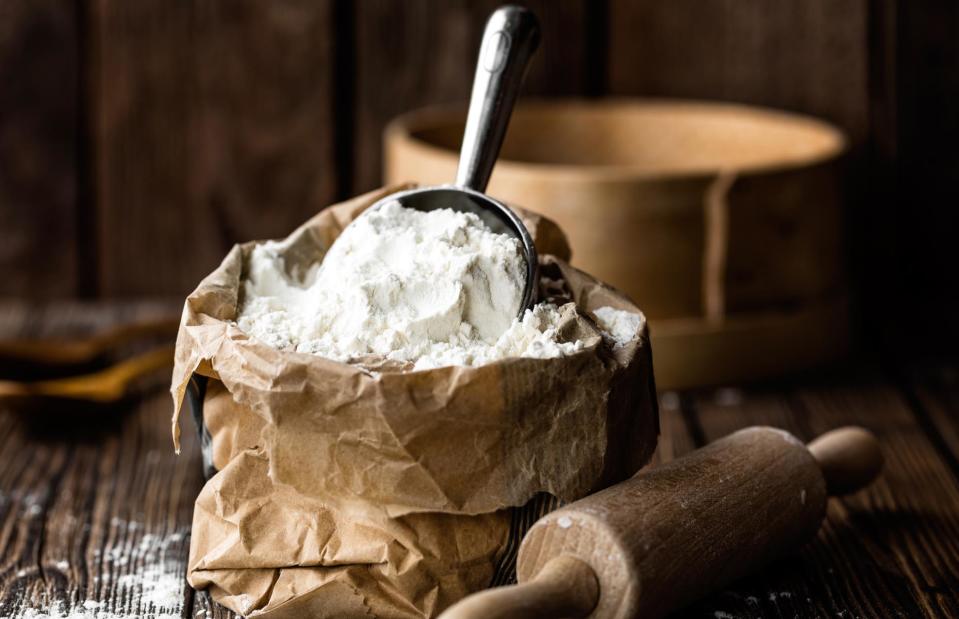
Sunny Forest/Shutterstock
Different flours need treating differently. While plain flour should be used within a year of purchase, wholemeal flour has oils in it, meaning it can go off sooner – the USDA recommends consuming within three to six months if stored in the cupboard, or six to eight months if refrigerated. Self-raising flour should be used by its best before date, as the raising agent will no longer be active after that. If you spot any kind of bug or weevil in your flour, dispose of it immediately.
Fresh eggs

New Africa/Shutterstock
The correct way to store your eggs depends on where you live. In the US, eggs are sterilised before going on sale; while this prevents bacteria growing, it also weakens the shell, meaning they must be kept in the fridge. In Europe, eggs aren’t sterilised, leaving them with a stronger shell barrier, so they can be stored elsewhere. Got eggs that have gone out of date? Try the floating egg trick; if the egg sinks to the bottom of a glass of water, it’s fine to consume. If it floats, however, you should discard it.
Fresh fish
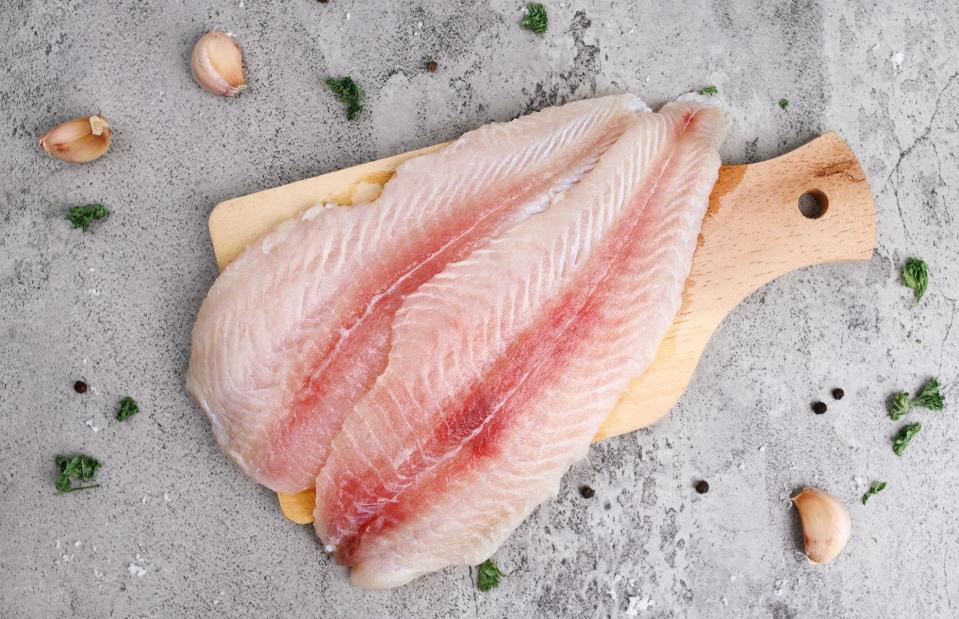
Queenmoonlite Studio/Shutterstock
Fish is best enjoyed fresh and the USDA recommends only keeping raw fish and shellfish in the fridge for one to two days before cooking or freezing and refrigerating for up to four days once cooked. If you prefer storing it in the freezer, raw fish should be consumed within three to eight months, while shellfish can last up to 12 months.
Fresh hot dog sausages

Natasha Breen/Shutterstock
Fresh (as opposed to canned) hot dog sausages such as frankfurters should be kept chilled at all times. Under European and UK laws, fresh hot dogs will always have a use by date which should be followed. American hot dogs without any date stamps can be safely stored in an unopened packet for two weeks in the refrigerator – once opened, consume within a week. If freezing, eat within two months for optimum food safety and flavour.
Fresh meat

Marian Weyo/Shutterstock
From ground turkey to pork chops, fresh meat doesn’t have the longest shelf life. Official US government website FoodSafety.gov suggests that ground meats and hamburgers can be kept in the fridge for one to two days, or frozen for around three to four months. Fresh meats such as beef, lamb and pork can be refrigerated for up to five days or frozen for up to a year.
Frozen vegetables
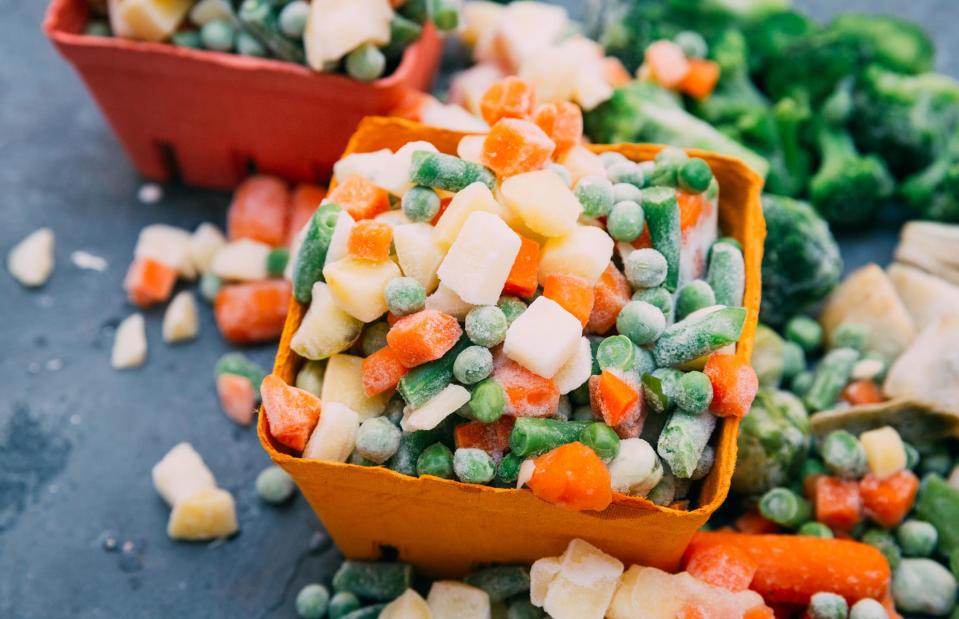
Victoria43/Shutterstock
Given that freezing is a great way of preserving food, you may think frozen veg will last indefinitely, but it will actually only be at its optimum for around 10-18 months after purchase. Although old frozen veg is unlikely to make you ill, it can lose its colour and shape, or ice crystals may form. A safety tip: some types of frozen produce may not be safe to eat unless cooked; always read the label carefully and if it says the product should be cooked, do so.
Guacamole

Alexander Prokopenko/Shutterstock
While avocado begins to brown almost immediately after being cut open, a good squirt of lemon or lime juice can prevent this. Fresh guacamole will last for around three to four days in the fridge and for up to four months in the freezer. Keeping your guacamole covered and tightly sealed should prevent the top from turning brown; if this does happen, simply scrape off - the layer underneath will be fine to eat.
Hard-boiled eggs
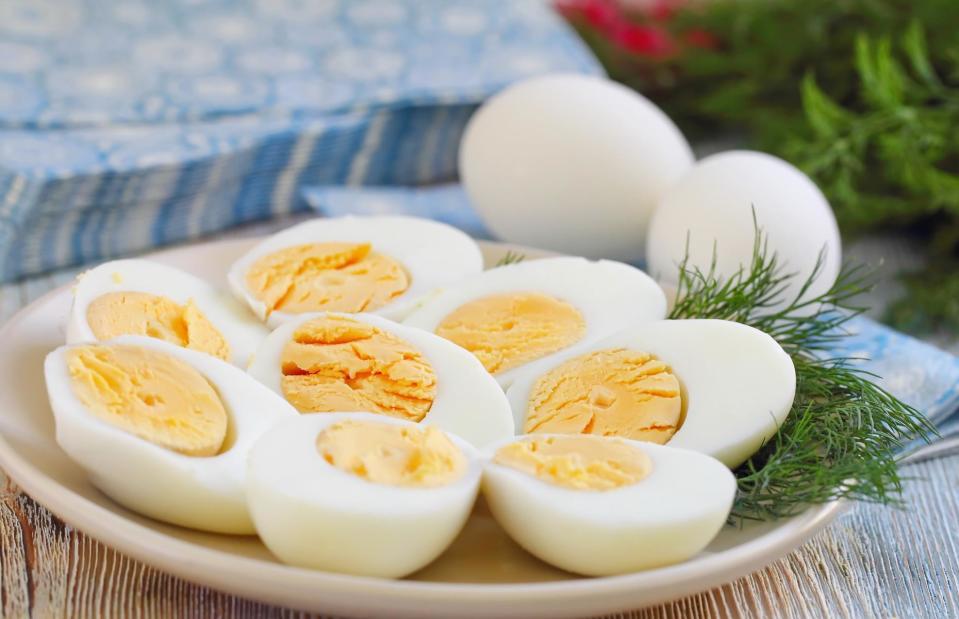
Gamzova Olga/Shutterstock
Hard-boiled eggs make a great snack or sandwich filling, so it makes sense to boil a few in advance and use them up during the week. Be sure to refrigerate your eggs within two hours of cooking and keep them in a sealed container (peeled or unpeeled) for a maximum of a week, though. We'd recommend labelling the container with a use by date too, so you don't forget.
Hard cheese

HandmadePictures/Shutterstock
It's perfectly fine to make a visual assessment when it comes to deciding if hard cheeses like Cheddar or Emmental are safe to eat. If you see any mould, the USDA recommends cutting away at least 2.5cm (1in) around the mouldy area. Once trimmed, the remaining cheese should be safe to consume. Make sure you keep it wrapped and refrigerated to prevent any further mould build-up and to stop it from drying out.
Honey

showcake/Shutterstock
Honey is one of the few foods that doesn’t spoil. Stored properly, in a dark, dry cupboard or pantry, this natural product can last indefinitely, although it does crystallise over time, which gives it a cloudy appearance. If this happens, the flavour tends not to be affected. To change it back to its original appearance, place in a bowl of warm water to break down the crystals. Most producers do recommend consuming honey within two years.
Hummus

Brent Hofacker/Shutterstock
Homemade or fresh, unpasteurised supermarket hummus (the sort you'll find in the chilled aisles) needs eating before the use by date, if there is one (if there isn't, the USDA recommends consuming within seven days). If you're buying longer-life pasteurised hummus with preservatives, the seven-day rule still applies, but not until you open it.
Ice cream

Moving Moment/Shutterstock
You might think that ice cream will keep indefinitely, given that it’s a frozen product. But for maximum taste and texture, you'll probably only get away with keeping it for a couple of months after the best before date (if there is one). It's not a health hazard to eat ice cream after that time but ice crystals can form, which will impact the taste. This is especially true after the ice cream has been opened – always make sure to properly reseal the tub and don't leave out of the freezer for too long.
Ice lollies

Nadezhda Nesterova/Shutterstock
Shop-bought lollies are safe to eat as long as they taste and look good, so you can pretty much ignore any best by date (as long as your freezer is at the correct temperature). If you make your own using fruit purée, yogurt or coconut milk, consume within a month or two.
Mayonnaise
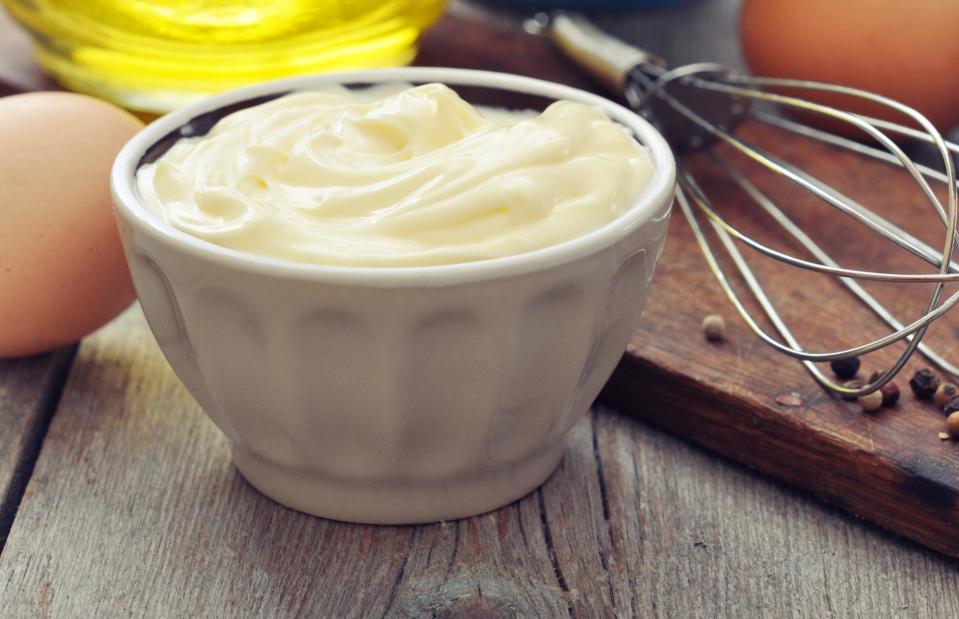
mama_mia/Shutterstock
It's a myth that this condiment is a common cause of food poisoning. Experts from NC State University suggest that it’s not actually the mayonnaise causing issues, but rather the ingredients mixed with it. From potato salad to tuna pasta dishes, these items are often left out at picnics and barbecues and the heat can cause bacteria to grow, with harmful side effects. Commercial mayonnaise contains pasteurised eggs and acidic vinegar – the enemy of food borne bacteria –, so consumed alone it's fine. An opened jar or bottle can keep happily in the fridge for two months.
Nuts
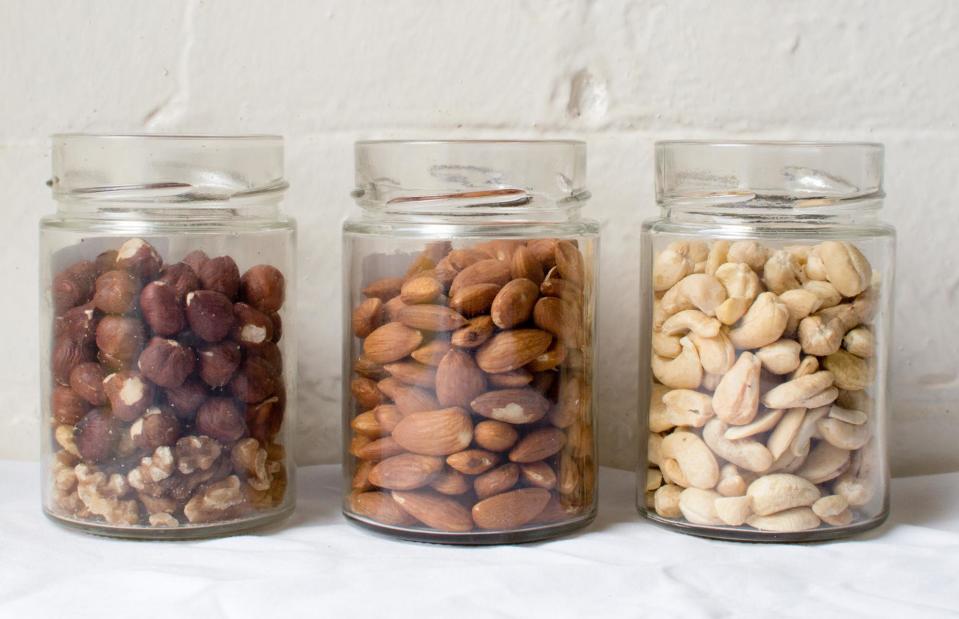
Natalie Board/Shutterstock
The healthy, unsaturated oils in roasted, shelled nuts mean that after opening their shelf life can be as little as one to two weeks (unshelled nuts last longer). That said, they’re fine to eat, unless you notice a stale or rancid taste. The best way to store nuts is in tightly sealed containers or, if you have room, in the fridge where they'll last for around four weeks.
Pasta

Sea Wave/Shutterstock
Whether we're talking penne tossed in tomato sauce or indulgent, creamy linguine, nothing beats a comforting bowl of pasta. Though dried pasta can be stored indefinitely, experts recommend using it within two years for maximum taste. For best results, keep stored in an airtight container or sealed in the original packaging. Fresh pasta, however, is best enjoyed on the day it’s made, but can be stored in the fridge for up to two days or frozen for up to two months.
Peanut butter
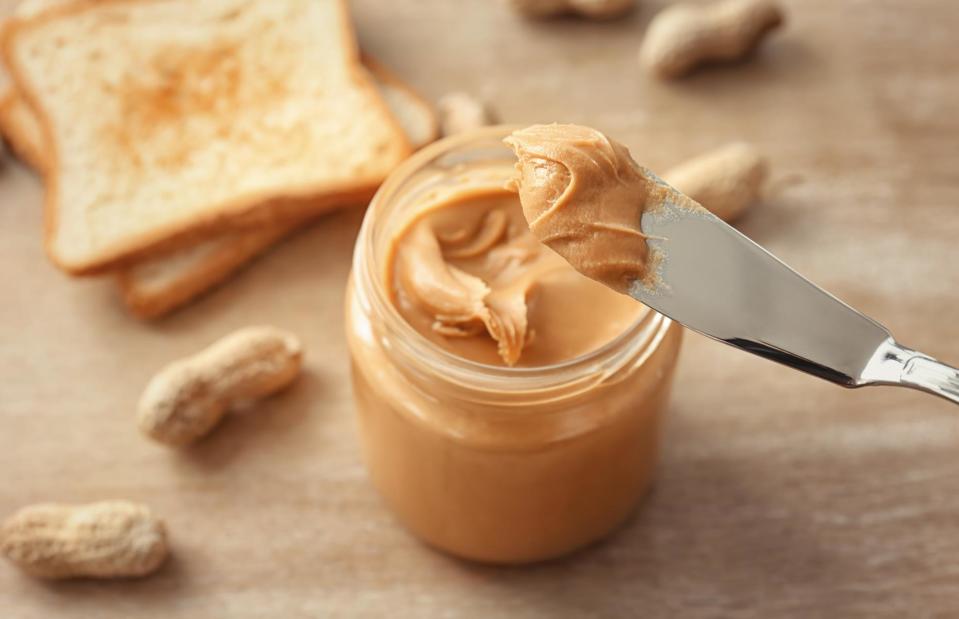
New Africa/Shutterstock
Peanuts are high in oil, so while peanut butter can last a while, it can also go rancid (you’ll know by the smell when you open the jar). According to the USDA, unopened peanut butter stays good for up to two years, but once opened, both crunchy and smooth versions have a shelf life of around six months, or a month or so longer if kept in the fridge.
Pesto
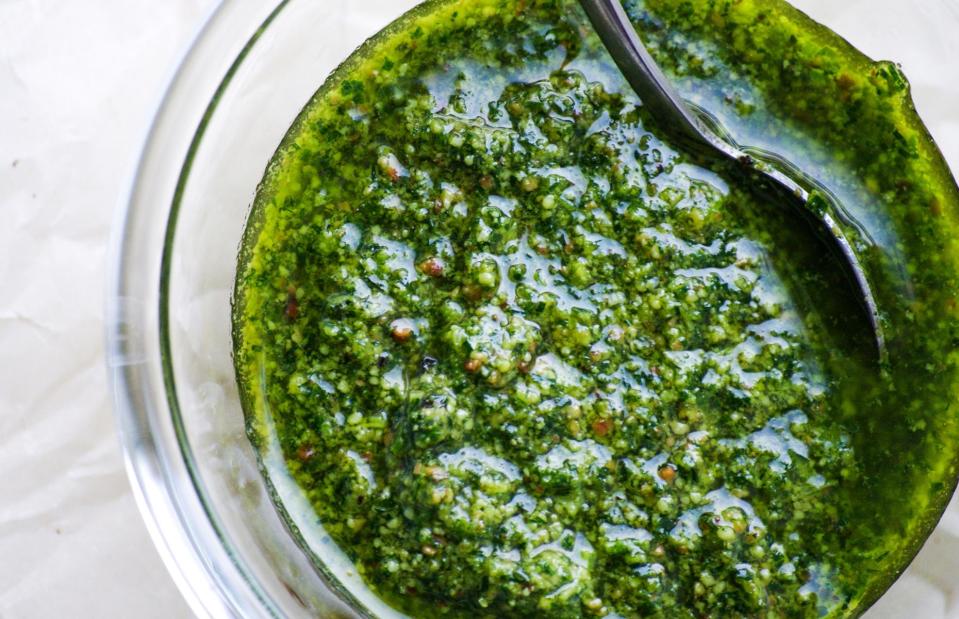
Margarita Bondar/Shutterstock
An unopened jar of pesto can last for a few weeks past any best by/before date printed on it. Once opened, give it a good stir, store in the fridge and eat within three days, says the USDA. Fresh, chilled pesto will often have a use by date which should be respected, while a homemade version should also be eaten within three to four days.
Preserves

Africa Studio/Shutterstock
It does depend on the manufacturer, but if stored in the fridge, opened preserves such as jams and marmalades can last for up to a year. The higher in sugar the product, the longer it tends to last. Low-sugar or sugar-free jam has a shorter fridge life by a couple of months. How you treat it also makes a difference – contaminate sugary spreads with bits of butter from a dirty knife and they’ll spoil sooner.
Rice
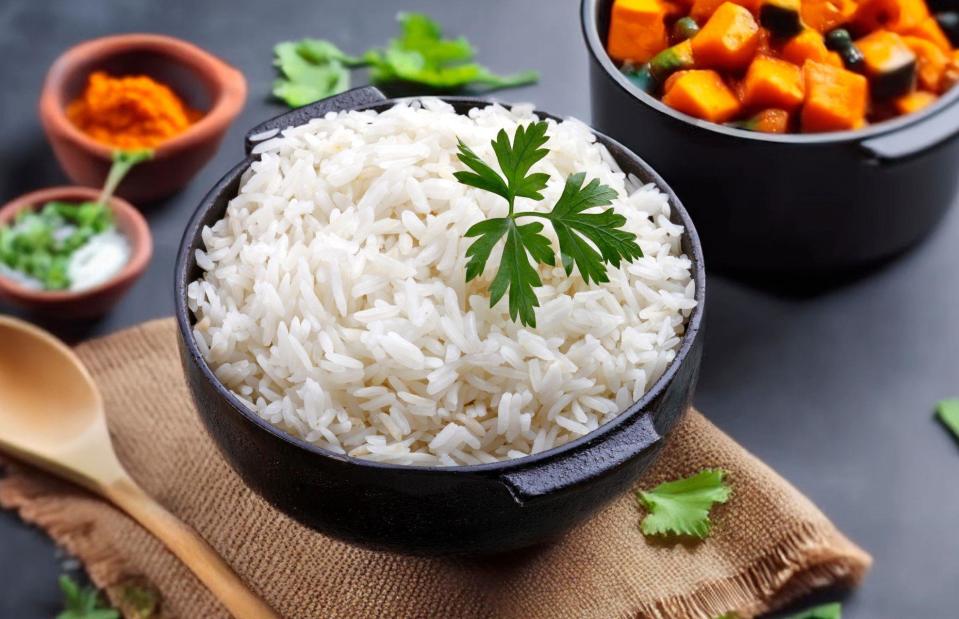
rocharibeiro/Shutterstock
If you find a bag of rice stuffed in the back of your cupboard, it's worth pausing before throwing it away. Milled styles such as jasmine, basmati and arborio are fine to eat indefinitely, provided they're stored in a sealed package or airtight container. Wholegrain rice (including brown rice) has a shelf life of around six months, though this can be extended if frozen. According to the USDA, cooked rice is safe to eat if stored in the fridge for up to five days or frozen for up to six months. It must be cooled quickly before storing and reheated thoroughly, though – and never reheat rice more than once.
Salami or pepperoni sausage

Africa Studio/Shutterstock
These delicious, dry-cured meats last longer than you might think. Unopened, a dry salami or pepperoni sausage can keep indefinitely in the fridge. Once opened, it will last around two to three weeks; store in a sealed container and if it feels or looks slimy to the touch, bin it.
Sandwich meat
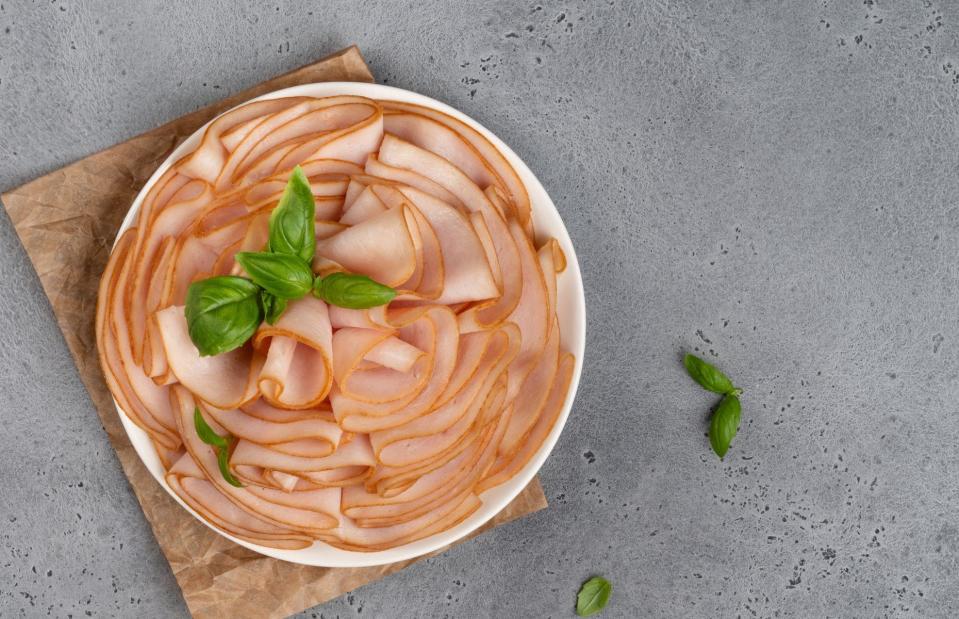
Alena_Kos/Shutterstock
From turkey slices to cooked chicken chunks, sandwich meats are handy to have around. Luncheon meat usually has a use by date on it, but can last around two weeks in the fridge if unopened. If you’ve opened a packet, it’s best to consume within three to five days.
Soft cheese
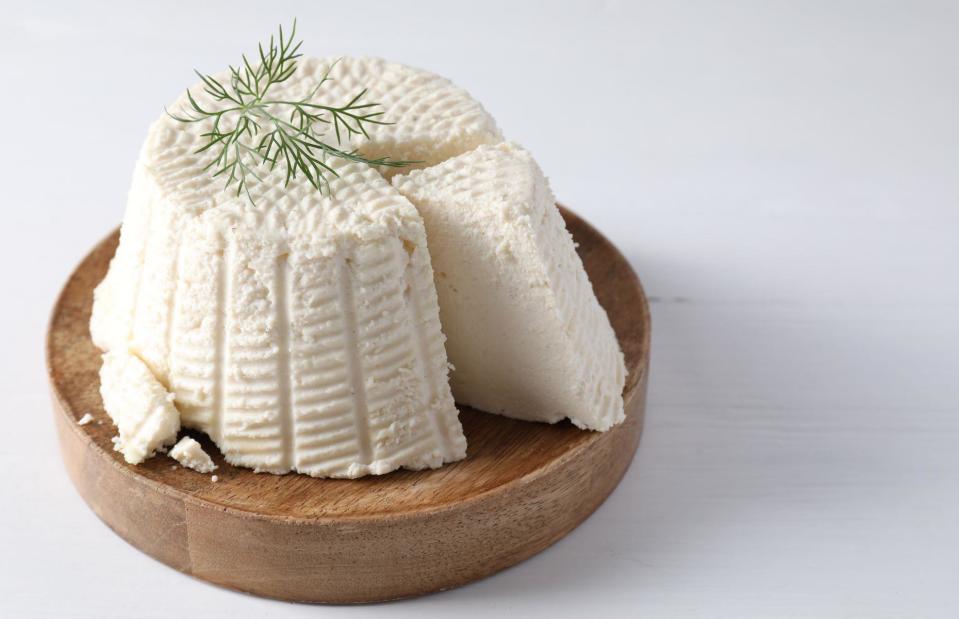
New Africa/Shutterstock
Unlike hard cheese, soft styles such as Brie, goats' cheese and cottage cheese can go off rapidly. The USDA recommends consuming within one to two weeks and advises consumers to look out for signs of deterioration. If you see any discolouration or mould, you'll need to throw the whole packet out to avoid getting ill.
Sushi

Hammad Stock Images/Shutterstock
Never take any risks when it comes to raw fish. While safe to consume when prepared under hygienic conditions by expert chefs, refrigerated sashimi or any type of sushi with a raw fish topping is only guaranteed to last between one and two days after preparation, while cooked styles should be consumed within three to four days. Don’t push your luck by eating it after this time.
Takeaway leftovers
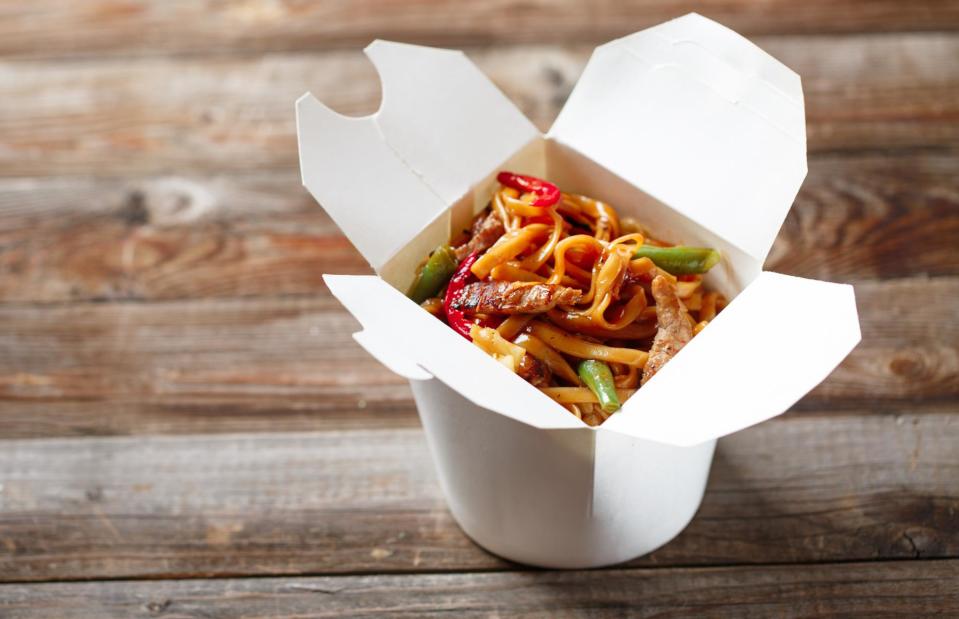
Sergey Mironov/Shutterstock
You can keep leftover pizza for three to four days if refrigerated, but other meals like chicken or fish takeaways are best eaten within two days. Do make sure you reheat thoroughly (especially dishes with meat, fish and rice) before eating. Both the UK Food Standards Agency (FSA) and USDA warn that any food that's been at room temperature for more than two hours should be ditched altogether.
Tortillas
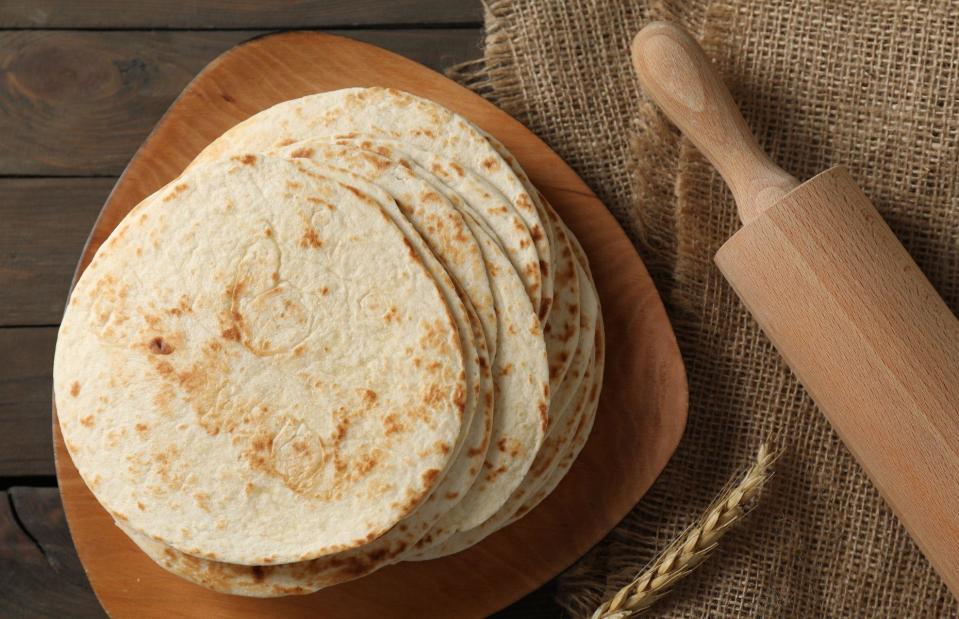
New Africa/Shutterstock
Made with a few simple ingredients, tortillas can level up any midweek dinner from flavour-packed fajitas to soft shell tacos. Once opened, you can keep a packet of flour tortillas in the fridge for up to four weeks and corn tortillas for up to eight weeks.
Yogurt
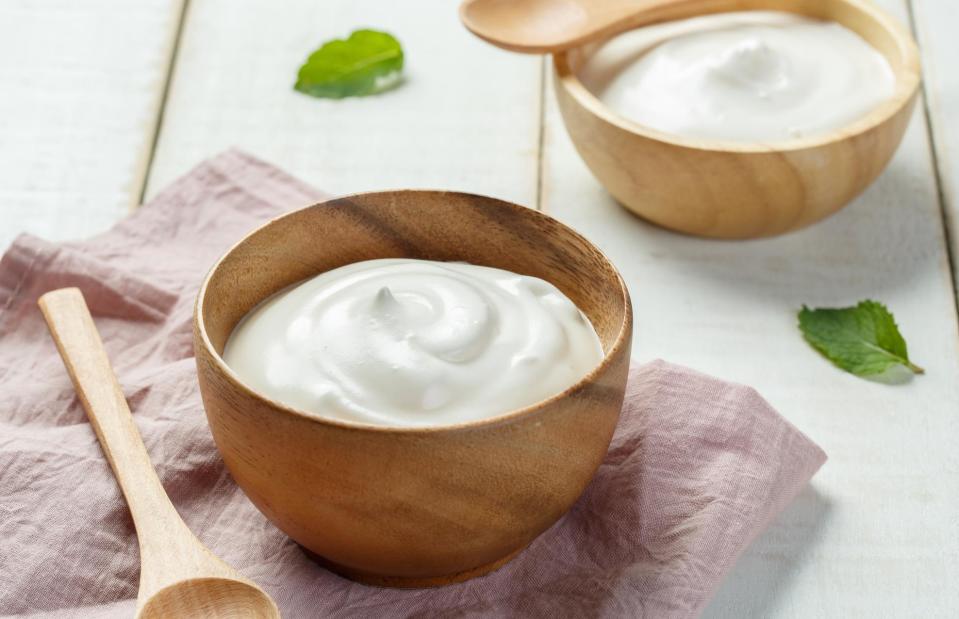
DONOT6_STUDIO/Shutterstock
The acid in yogurt stops the growth of harmful bacteria, but spoilage organisms like moulds and yeasts can still grow. These won't give you food poisoning, but it pays to follow the best before date on these products if there is one. The USDA recommends refrigerating and consuming yogurt within one to two weeks of purchase or storing in the freezer for up to two months.
Now discover the foods that should NEVER be kept in the fridge


